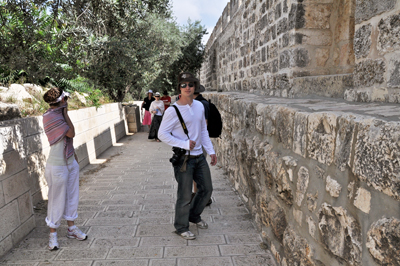There are some unique locations in the Land of the Bible where you really get a sense of place. One of these is inside the Eastern Wall of the Temple Mount in Jerusalem. Here the record of Jesus’ visit to the Temple precincts in John 10.22-39 comes to vibrant life. We are told:
And it was the feast of the dedication at Jerusalem: it was winter; and Jesus was walking in the Temple in Solomon’s Porch (John 10:22,23).
Jesus had come to keep Hanukkah, the Feast of Lights. This feast commemorates the dedication of the Temple in 164 BC, after it had been defiled by Antiochus IV Epiphanes, who, three years earlier, had ordered a pig to be sacrificed on the Temple altar.
But why does this place evoke the Gospel story so powerfully? It is surely because this side of the Temple Mount is closest to the original, with minimal additional construction. The Eastern Wall of the Temple Mount was the only one that was not moved by King Herod the Great when he carried out his monumental expansion of the Temple Mount in the first century.
At present there are no porticoes along the Eastern and Southern Walls of the Temple Mount. In the Herodian period, however, there were porticoes on all sides. The eastern stoa pre-dated the others and was already colonnaded in the Hasmonean period. This Porch, or stoa, stood directly over the wall of the earlier square Temple Mount and at the time of Herod the Great, was known as Solomon’s Porch.



This does not necessarily mean that this porch was built by this famous king, but certainly by Herod’s predecessors. Offering welcome shelter from sun, wind and rain, it was obviously used as a place of congregation. Josephus provides us with an evocative description:
The porticoes, all in double rows, were supported by columns five and twenty cubits high—each a single block of the purest white marble—and ceiled with panels of cedar. The natural magnificence of these columns, their excellent polish and fine adjustment presented a striking spectacle. (War 5.190–192)
It was here that Jesus was almost stoned one wintry day during the feast of Hanukkah (John 10.31). Acts 3.11 and 5.12 also provide us with images of the time when the disciples used to congregate and teach here after the death of their master.
Postscript: During this feast, a Hanukkiah is lit, but what is the difference between a Hanukkiah and a Menorah (Lampstand)?


